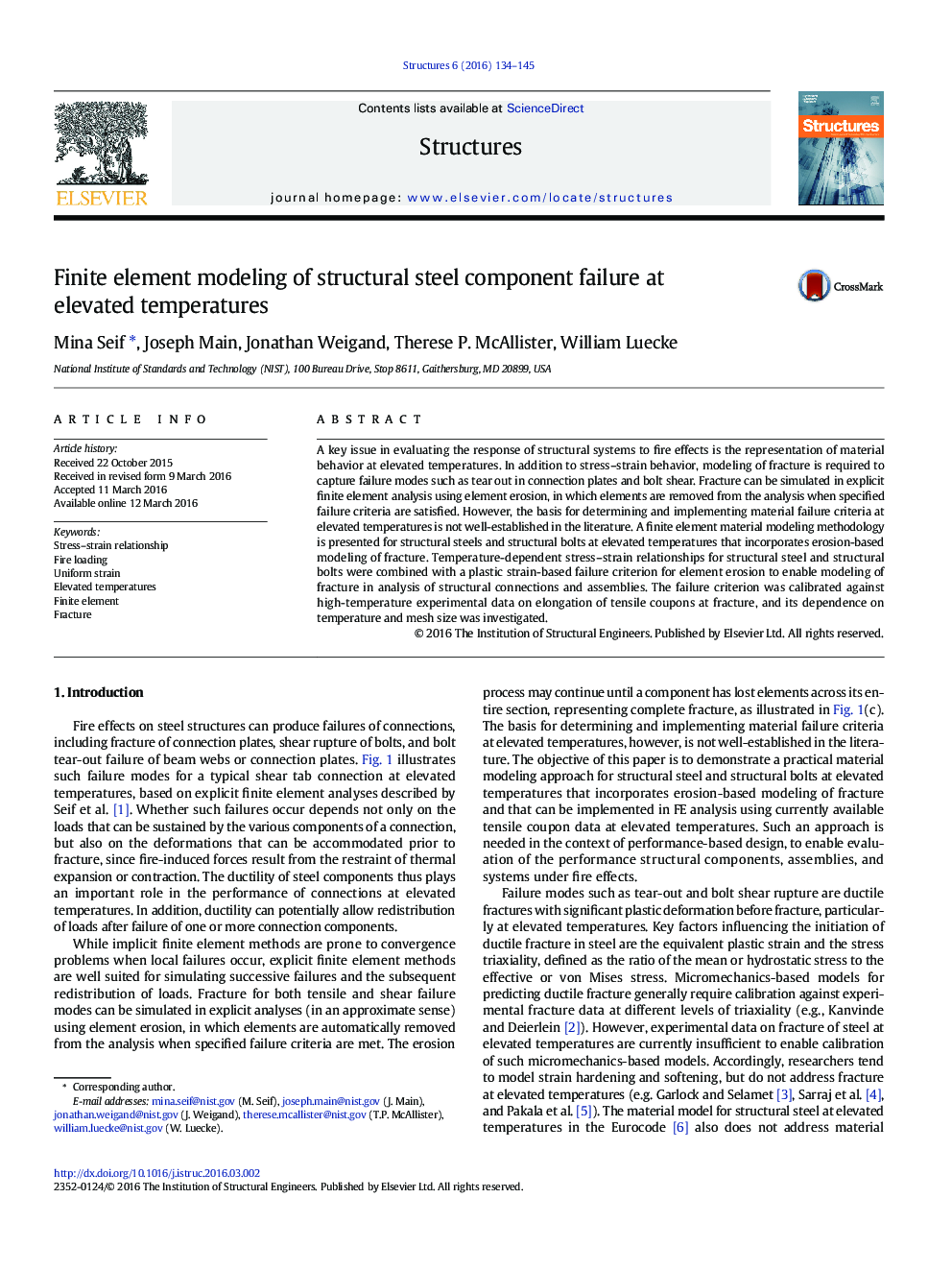| Article ID | Journal | Published Year | Pages | File Type |
|---|---|---|---|---|
| 6774729 | Structures | 2016 | 12 Pages |
Abstract
A key issue in evaluating the response of structural systems to fire effects is the representation of material behavior at elevated temperatures. In addition to stress-strain behavior, modeling of fracture is required to capture failure modes such as tear out in connection plates and bolt shear. Fracture can be simulated in explicit finite element analysis using element erosion, in which elements are removed from the analysis when specified failure criteria are satisfied. However, the basis for determining and implementing material failure criteria at elevated temperatures is not well-established in the literature. A finite element material modeling methodology is presented for structural steels and structural bolts at elevated temperatures that incorporates erosion-based modeling of fracture. Temperature-dependent stress-strain relationships for structural steel and structural bolts were combined with a plastic strain-based failure criterion for element erosion to enable modeling of fracture in analysis of structural connections and assemblies. The failure criterion was calibrated against high-temperature experimental data on elongation of tensile coupons at fracture, and its dependence on temperature and mesh size was investigated.
Keywords
Related Topics
Physical Sciences and Engineering
Engineering
Civil and Structural Engineering
Authors
Mina Seif, Joseph Main, Jonathan Weigand, Therese P. McAllister, William Luecke,
